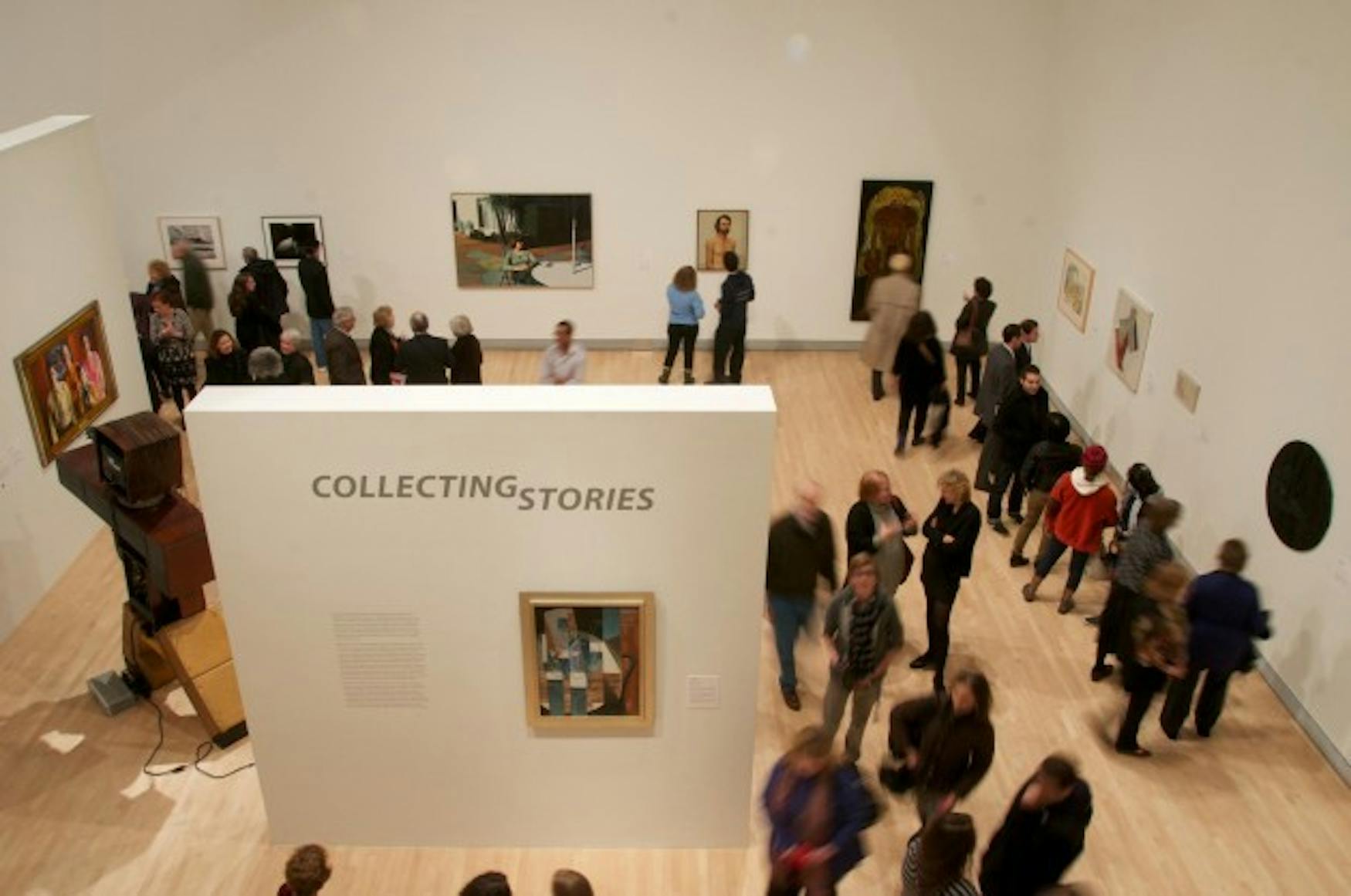Museum's reopening draws crowd
Brandeis students, staff, alumni and various other supporters of the Rose Art Museum gathered there last Thursday evening to celebrate the 50th anniversary of its founding, in addition to its reopening.
The reopening marked a symbolic end to the two years of upheaval that followed the 2009 decision by the Brandeis Board of Trustees to allow then-President Jeuhda Reinharz to sell the Rose's collection. The University backtracked on this decision after it was met with ardent protests from students, faculty and patrons of the Rose as well as a lawsuit brought by members of the Rose Board of Overseers.
After University President Frederick Lawrence settled the lawsuit this summer, a $1.7-million renovation project funded by a donation made by Gerald S. and Sandra Fineberg—which was announced in March—was completed and the Rose ushered in a new era by celebrating its history.
The main gallery displays an exhibition called "Art at the Origin: the Early 1960s," which featured works acquired by the museum in its earliest years. These included pieces by such renowned modern artists as Roy Lichtenstein, Andy Warhol, Willem de Koonig, Robert Indiana, and Claes Oldenburg.
Also displayed were Bruce Conner's silent, never-ending film "EVE-RAY-FOREVER (1965/2006)" in the Mildred S. Lee Gallery, and a variety of old and new acquisitions, titled "Collecting Stories," in the Lois Foster Gallery.
An hour and a half into the program of art, food and drinks (served buffet-style in a large tent in front of the Rose), and music of the 1960s (courtesy of local disc jockies Chances With Wolves), Lawrence gave a formal welcome to the attendees.
Director of Museum Operations Roy Dawes introduced Lawrence, thanking him as well as the museum staff, student workers, volunteers and donors for making the event possible.
"Brandeis students have so much passion for [the Rose]," said Dawes. "It's incredible, and I've seen it firsthand over the last two years."
Lawrence welcomed everyone to "the beginning of the second 50 years of the Rose Art Museum," which was met with cheers and applause. He acknowledged the resolution of the controversy over the potential sale of the Rose's collection, saying that "[the story of the Rose] is not a story with a happy ending; this is a story with a new beginning."
Lawrence called the Rose's collection "iconic" and suggested that it is worthy of any museum in any city. "A university that can have a great art museum has a great treasure and a great asset," said Lawrence. "Our goal now is to make sure that this museum and its collection is thoroughly interwoven into the life of this university."
After a nearly three-year period of turmoil surrounding the Rose, students received its reopening with equal enthusiasm.
Warner Curatorial Intern Meryl Feinstein '12, who sits on the search committee for the next director of the Rose, said in an interview with the Justice, "[The Rose is] an amazing resource for students to learn from, and I think that educational mission got lost a lot during that … controversy." However, Feinstein continued,
"I think the mission of the Rose is definitely going back to its roots, so I'm very optimistic that things are only getting better."
Student Union President Herbie Rosen '12 called the reopening event "a loud declaration that [the Rose] is here to stay."
"I just started school and now I get to come in and be a part of it," said Eve Herman '15, who, like the majority of current Brandeis undergraduates, was not at the University to experience firsthand the dispute over the Rose's collection.
For Becca Ulm '11 PB '12, who was at the center of the student movement to protest the sale of the Rose's collection, the reopening of the Rose is "the greatest possible outcome."
"Come experience it, we're still here," said Ulm.



Please note All comments are eligible for publication in The Justice.